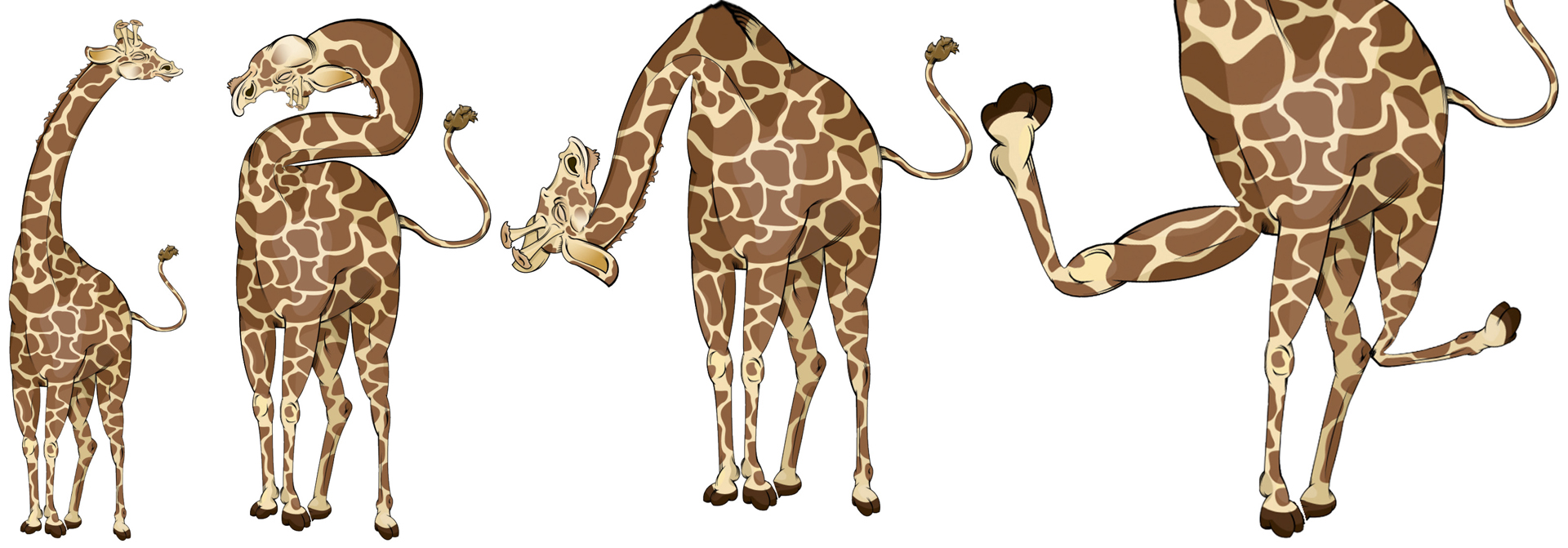“Controllable conformal maps for shape deformation and interpolation” by Weber and Gotsman
Conference:
Type(s):
Title:
- Controllable conformal maps for shape deformation and interpolation
Presenter(s)/Author(s):
Abstract:
Conformal maps are considered very desirable for planar deformation applications, since they allow only local rotations and scale, avoiding shear and other visually disturbing distortions of local detail. Conformal maps are also orientation-preserving C∞ diffeomorphisms, meaning they are extremely smooth and prevent unacceptable “foldovers” in the plane. Unfortunately, these maps are also notoriously difficult to control, so working with them in an interactive animation scenario to achieve specific effects is a significant challenge, sometimes even impossible.We describe a novel 2D shape deformation system which generates conformal maps, yet provides the user a large degree of control over the result. For example, it allows discontinuities at user-specified boundary points, so true “bends” can be introduced into the deformation. It also allows the prescription of angular constraints at corners of the target image. Combining these provides for a very effective user experience. At the heart of our method is a very natural differential shape representation for conformal maps, using so-called “conformal factors” and “angular factors”, which allow more intuitive control compared to representation in the usual spatial domain. Beyond deforming a given shape into a new one at each key frame, our method also provides the ability to interpolate between shapes in a very natural way, such that also the intermediate deformations are conformal.Our method is extremely efficient: it requires only the solution of a small dense linear system at preprocess time and a matrix-vector multiplication during runtime (which can be implemented on a modern GPU), thus the deformations, even on extremely large images, may be performed in real-time.
References:
1. Ahlfors L. 1979. Complex Analysis, 3rd Edition. McGraw-Hill Science.Google Scholar
2. Bell S.-R. 1992. The Cauchy Transform, Potential Theory and Conformal Mapping. CRC-Press.Google Scholar
3. Duren, P. 2004. Harmonic mappings in the plane. Cambridge University Press.Google Scholar
4. Floater M. S., Hormann K., Kòs G. 2006. A general construction of barycentric coordinates over convex polygons. Adv. Comp. Math. 24, 1–4.Google ScholarCross Ref
5. Floater M. S. 2003. Mean-value coordinates. Comp. Aided Geom. Design 20, 1, 19–27. Google ScholarDigital Library
6. Hormann, K., Floater M. S. 2006. Mean value coordinates for arbitrary planar polygons. ACM Transactions on Graphics 25, 4. Google ScholarDigital Library
7. Hormann, K., Sukumar, N. 2008. Maximum entropy coordinates for arbitrary polytopes. Computer Graphics Forum, 27, 5.Google ScholarDigital Library
8. Hromadka II, T. V., Lai, C., 1987. The Complex Variable Boundary Element Method in Engineering Analysis, Springer-Verlag Publishers.Google Scholar
9. Igarashi T., Moscovich T., Hughes J.-F. 2005.-Rigid-As-Possible shape manipulation. ACM Transactions on Graphics (Proc. SIGGRAPH), 24, 3. Google ScholarDigital Library
10. Joshi, P., Meyer, M., Derose, T., Green, B., And Sanocki, T. 2007. Harmonic coordinates for character articulation. ACM Transactions on Graphics (Proc. SIGGRAPH), 26, 3. Google ScholarDigital Library
11. Karni, Z., Freedman, D., Gotsman, C. 2009. Energy-based content-aware image deformation. Computer Graphics Forum (Proc. SGP), 28, 5.Google ScholarCross Ref
12. Kythe, K., P. 1995. An introduction to boundary element methods. CRC Press.Google Scholar
13. Lévy B., Petitjean S., Ray N., Maillot J. 2002. Least squares conformal maps for automatic texture atlas generation. Proc. SIGGRAPH. Google ScholarDigital Library
14. Lipman, Y., Levin, D., Cohen-Or, D. 2008. Green Coordinates. ACM Transactions on Graphics (Proc. SIGGRAPH), 27, 3. Google ScholarDigital Library
15. Martin, S., Kaufmann, P., Botsch, M., Wicke, M., Gross, M. 2008. Polyhedral finite elements using harmonic basis functions. Computer Graphics Forum 27, 5.Google ScholarCross Ref
16. Schaefer S., McPhail T., Warren J. 2004. Image deformation using moving least squares. ACM Transactions on Graphics (Proc. SIGGRAPH), 23, 3. Google ScholarDigital Library
17. Weber, O., Ben-Chen, M., Gotsman, C. 2009. Complex barycentric coordinates with applications to planar shape deformation. Computer Graphics Forum 28, 2.Google ScholarCross Ref





